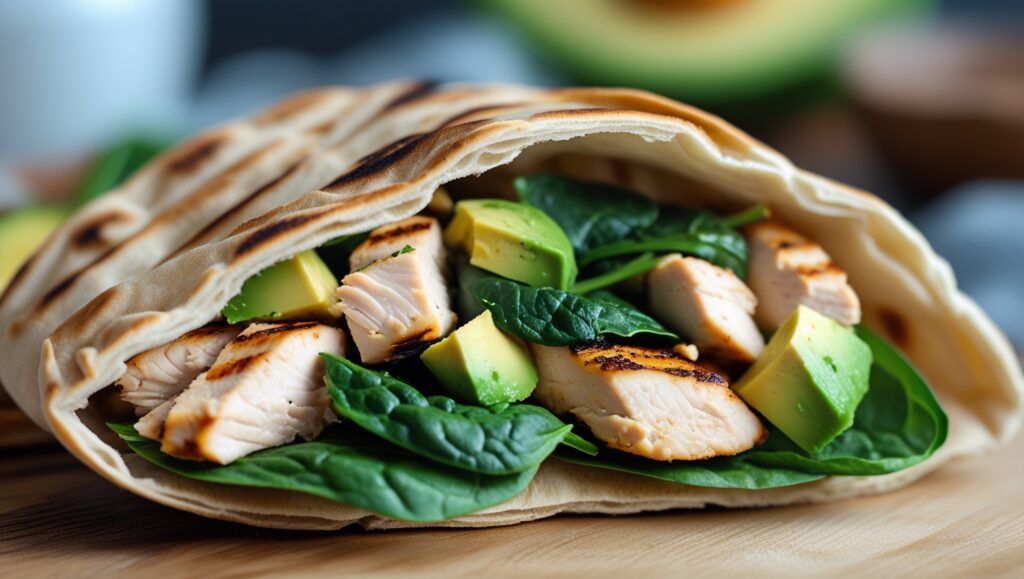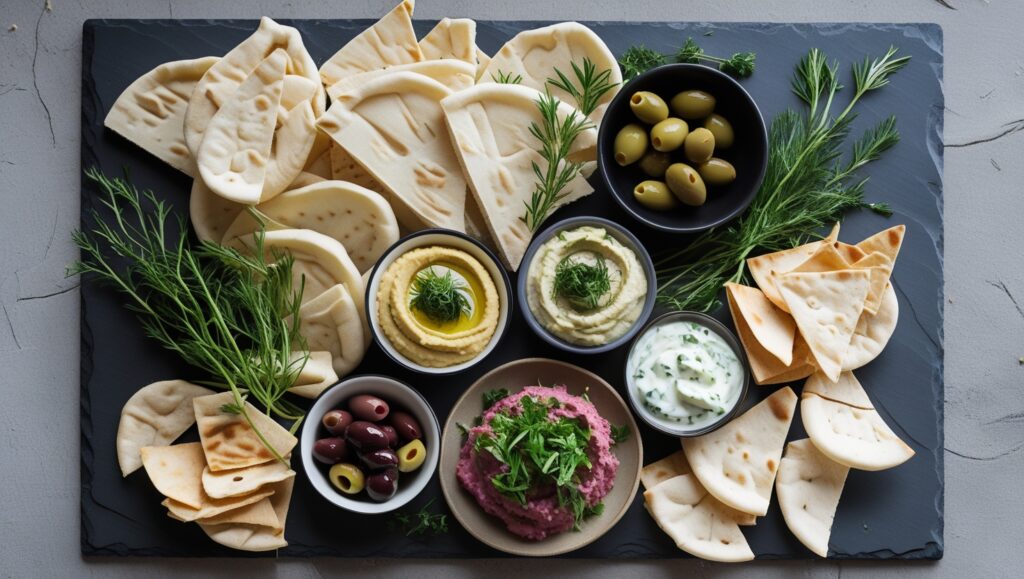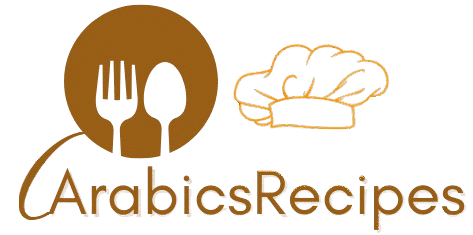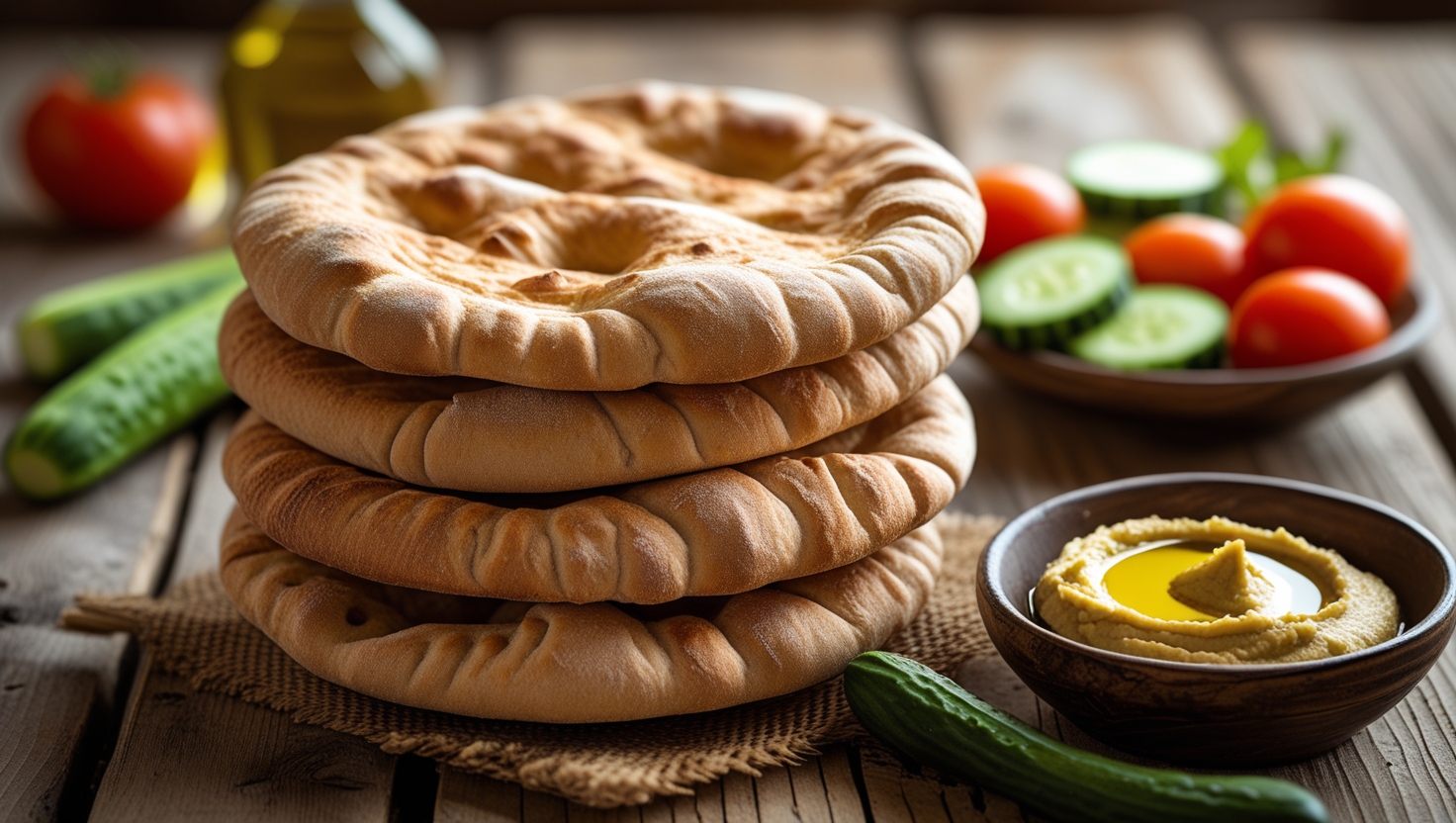Introduction
Pita bread has been a staple in Middle Eastern and Mediterranean cuisines for centuries, loved for its versatility, light texture, and ability to pair well with a variety of dishes. But when it comes to pita bread nutrition, how does it measure up? Is it a healthy choice for everyday consumption?
In this article, we’ll take a deep dive into the nutritional profile of pita bread, explore its health benefits, and compare it to other popular bread types. Whether you’re watching your calorie intake, looking for high-fiber options, or wondering if pita fits into your diet plan, we’ve got all the answers.
Let’s start by breaking down the nutritional value of pita bread and uncovering what makes it a great (or not-so-great) choice for your meals.
Understanding Pita Bread Nutrition
What is Pita Bread?
Pita bread is a round, soft, and slightly puffy flatbread that originates from the Middle East. It’s known for its unique pocket, which forms when the bread puffs up during baking. This makes it perfect for stuffing with meats, vegetables, and spreads like hummus or tzatziki.
Traditionally made with flour, water, yeast, and salt, pita bread is a simple, wholesome food. But not all pita breads are created equal—some varieties use refined flour, while others are made with whole wheat, offering more fiber and nutrients.
Nutritional Breakdown of Pita Bread
To understand pita bread nutrition, let’s analyze its calories, macronutrients, and micronutrient content.
Calories and Macronutrient Composition
A standard white pita bread (about 6.5 inches in diameter) contains:
- 165 calories
- 33 grams of carbohydrates
- 6 grams of protein
- 1.5 grams of fat
The majority of its calories come from carbohydrates, which provide energy. It’s relatively low in fat and moderate in protein, making it a well-balanced bread option.
Fiber and Carbohydrate Content
Pita bread is a good source of carbohydrates, but the type of flour used makes a big difference in fiber content.
- White pita bread has less fiber because it’s made with refined flour.
- Whole wheat pita bread contains more fiber (3-4g per serving), helping with digestion and keeping you full longer.
Eating high-fiber foods like whole wheat pita can support gut health and regulate blood sugar levels.
Protein and Fat Profile
One surprising benefit of pita bread is its protein content. With about 6 grams per serving, it provides more protein than some other types of bread.
As for fat, pita bread is naturally low in fat, with less than 2 grams per serving, making it a heart-friendly choice when compared to buttery or oil-rich bread options.
Whole Wheat vs. White Pita Bread: Which is Healthier?
The debate between white pita and whole wheat pita is similar to the battle between white and whole wheat bread. Here’s how they stack up:
| Nutrient | White Pita Bread | Whole Wheat Pita Bread |
|---|---|---|
| Calories | 165 | 168 |
| Carbs | 33g | 32g |
| Fiber | 1-2g | 3-4g |
| Protein | 5-6g | 6-7g |
| Fat | 1.5g | 2g |
Whole wheat pita bread wins when it comes to fiber, protein, and overall nutrition. It contains more vitamins and minerals, such as B vitamins, magnesium, and iron, making it a healthier choice for those looking to boost their nutrient intake.
However, if you’re looking for a lighter texture or a lower-fiber option, white pita bread can still be a good choice, especially when paired with fiber-rich fillings.
Health Benefits of Pita Bread

Pita Bread as a Source of Energy
Pita bread is a great energy booster, thanks to its high carbohydrate content. Since carbohydrates are the body’s primary fuel source, eating pita bread in the morning or before a workout can provide sustained energy. Whole wheat pita is even better because it has complex carbs, which digest slowly and help maintain stable blood sugar levels.
If you’re looking for a balanced meal, pairing pita bread with lean proteins and healthy fats can enhance its benefits. A good example would be a chicken shawarma wrap stuffed in whole wheat pita, which provides a perfect mix of protein, fiber, and healthy fats.
High Fiber Benefits: Digestion & Heart Health
Fiber plays a crucial role in digestion and heart health, and pita bread—especially the whole wheat variety—is a good source of dietary fiber. Fiber helps:
- Regulate digestion and prevent constipation
- Reduce cholesterol levels, lowering the risk of heart disease
- Keep you full longer, which can help with weight management
Whole wheat pita contains about 3-4 grams of fiber per serving, while white pita has less than 2 grams. So, if you’re looking to boost gut health and support heart function, choosing whole wheat is the smarter option.
Protein in Pita Bread: How It Supports Muscle Growth
Did you know that pita bread has more protein than some other bread types? A single serving contains around 6-7 grams of protein, which can be beneficial for muscle growth and repair. This makes pita an excellent post-workout snack, especially when combined with hummus, grilled chicken, or Greek yogurt.
Since protein is also key to reducing hunger cravings, including pita bread in high-protein meals can help you stay full longer and avoid unnecessary snacking.
Low-Fat and Low-Calorie Benefits for Weight Management
Compared to other types of bread, pita bread is relatively low in fat and calories. A typical serving has only 1-2 grams of fat, making it a heart-friendly option. If you’re on a weight loss journey, whole wheat pita can be a filling yet low-calorie choice when paired with vegetable-rich fillings and lean proteins.
If you want to explore healthy Middle Eastern meal options, check out this hummus and falafel plate recipe—a nutritious combination with pita bread!
How Pita Bread Fits into Different Diets
Is Pita Bread Good for Weight Loss?
Absolutely! Whole wheat pita bread is a great addition to a weight-loss diet because it provides:
- Fiber to keep you full
- Low fat and calories compared to other bread types
- Protein to support muscle retention
The key is portion control. Eating too much pita bread can lead to excessive carb intake, so it’s best to stick to one serving per meal and pair it with lean proteins and healthy fats.
Can Diabetics Eat Pita Bread?
For diabetics, managing blood sugar levels is essential. White pita bread has a higher glycemic index (GI), meaning it can cause blood sugar spikes. However, whole wheat pita is a better choice because it:
- Has a lower GI, meaning it releases sugar more slowly
- Contains fiber, which helps regulate blood sugar
- Provides complex carbs, preventing energy crashes
If you’re diabetic, it’s best to eat whole wheat pita with high-fiber foods like grilled vegetables, lean proteins, or legumes to maintain stable glucose levels.
Is Pita Bread Vegan and Gluten-Free?
- Vegan? Yes! Pita bread is usually made with just flour, water, yeast, and salt, making it 100% plant-based. However, always check labels to ensure no dairy or animal-based additives are included.
- Gluten-Free? No, traditional pita bread contains wheat flour, which has gluten. However, there are gluten-free pita alternatives made with rice flour, chickpea flour, or almond flour.
Looking for a delicious plant-based meal? Try stuffing pita bread with falafel, hummus, and fresh veggies for a protein-packed vegan dish!
Comparing Pita Bread with Other Breads
Pita Bread vs. Regular Bread: Nutritional Differences
When it comes to pita bread nutrition, how does it compare to regular sandwich bread? While both serve as a staple in many diets, they have key differences in calories, fiber, and nutrient content.
| Nutrient | Pita Bread (Whole Wheat, 6.5″) | White Sandwich Bread (2 Slices) |
|---|---|---|
| Calories | 168 | 160 |
| Carbs | 32g | 30g |
| Fiber | 3-4g | 1-2g |
| Protein | 6-7g | 4g |
| Fat | 2g | 2g |
Whole wheat pita bread edges out regular white bread in terms of fiber, protein, and essential nutrients, making it a healthier choice for those looking to stay full longer. However, white sandwich bread is softer and easier to use for spreads, making it a convenient option for quick sandwiches.
Pita Bread vs. Naan: Which is Healthier?
Pita and naan are both flatbreads, but they have big differences in ingredients and nutrition. Naan is richer and denser because it often contains milk, butter, and sometimes yogurt, making it higher in fat and calories.
| Nutrient | Pita Bread (Whole Wheat) | Naan Bread |
|---|---|---|
| Calories | 168 | 260 |
| Fat | 2g | 7g |
| Carbs | 32g | 38g |
| Fiber | 3-4g | 2g |
If you’re watching your calories or fat intake, pita bread is the better option. However, naan’s richer texture and flavorful taste make it a delicious indulgence when paired with curries and stews.
Pita Bread vs. Tortillas: A Better Option?
Pita bread and tortillas are often used interchangeably in wraps and sandwiches, but they have some differences in nutrition.
- Flour tortillas have a softer texture but can be higher in calories due to added fats.
- Corn tortillas are lower in calories and carbs but tend to be smaller.
- Pita bread is higher in fiber and protein, making it more filling and nutritious.
For a balanced meal, whole wheat pita stuffed with lean protein, vegetables, and healthy fats is a nutrient-dense alternative to refined-flour tortillas.
Ways to Make Pita Bread Healthier
Choosing Whole Wheat Pita for More Nutrients
One of the simplest ways to improve pita bread nutrition is by choosing whole wheat over white pita bread. Whole wheat varieties have:
- More fiber, which helps digestion and keeps you full longer
- More vitamins and minerals, like B vitamins and iron
- A lower glycemic index, meaning it won’t spike blood sugar levels as quickly
If you’re aiming for better nutrition without sacrificing taste, opt for whole wheat pita whenever possible.
Pairing Pita Bread with Protein-Rich Fillings
Since pita bread is moderate in protein, pairing it with high-protein foods can make it even healthier. Some great filling ideas include:
- Grilled chicken and hummus for a Mediterranean-style wrap
- Scrambled eggs and avocado for a nutritious breakfast sandwich
- Lentil or chickpea-based spreads, such as hummus or baba ganoush, for a plant-based protein boost
By adding protein-rich fillings, you can turn pita bread into a well-rounded meal that keeps you full and energized.
Homemade Pita Bread: A Healthier Alternative?
If you want full control over the ingredients, making pita bread at home can be a great option. Store-bought versions often contain preservatives, added sugars, or excess sodium. When you bake your own pita, you can:
- Use whole wheat flour for extra fiber
- Limit unhealthy additives
- Control salt and sugar levels
Making pita at home is surprisingly simple, and freshly baked pita is so much tastier than store-bought versions.
For more delicious Middle Eastern meal ideas, check out this homemade hummus and falafel plate—perfect for serving with pita bread!
Frequently Asked Questions (FAQs) About Pita Bread Nutrition
Is Pita Bread Healthier Than Regular White Bread?
Yes, whole wheat pita bread is generally healthier than white bread. It contains more fiber, protein, and essential nutrients, making it a better choice for digestion, weight management, and heart health. Regular white bread, on the other hand, is often made with refined flour, which lacks fiber and essential vitamins.
However, if you’re choosing between white pita bread and white sandwich bread, their nutritional values are quite similar. The key is to opt for whole wheat pita whenever possible for better overall nutrition.
How Many Calories Are in a Serving of Pita Bread?
A standard 6.5-inch whole wheat pita contains about 168 calories, while a white pita of the same size has roughly 165 calories. The calorie content remains fairly low, making pita bread a good choice for balanced meals.
If you’re watching your calorie intake, you can portion control by using half a pita instead of a full one or choosing mini pitas for smaller servings.
Does Pita Bread Contain Gluten?
Yes, traditional pita bread is made with wheat flour, which means it contains gluten. However, if you have gluten sensitivity or celiac disease, you can find gluten-free pita alternatives made with chickpea flour, almond flour, or rice flour.
What Are the Best Toppings or Fillings for a Healthy Pita Meal?
To boost the nutritional value of pita bread, pair it with:
- Hummus and veggies for a fiber-rich meal
- Grilled chicken and avocado for lean protein and healthy fats
- Scrambled eggs and spinach for a nutritious breakfast option
- Tuna or salmon salad for an omega-3 boost
By choosing wholesome fillings, you can make pita bread a versatile, healthy addition to your diet.
Conclusion – Is Pita Bread a Healthy Choice?
After breaking down pita bread nutrition, it’s clear that whole wheat pita bread is a nutritious choice. It provides:
- Good amounts of fiber for digestion and gut health
- A balanced mix of carbs, protein, and low fat for sustained energy
- Essential nutrients like B vitamins and iron
If you’re aiming for a healthier lifestyle, pita bread can be a great addition to your meals—especially when paired with nutrient-dense toppings like lean protein, healthy fats, and fiber-rich veggies.
Final Tips for Choosing the Healthiest Pita Bread
- Always go for whole wheat over white pita for better fiber and nutrients.
- Check ingredient labels to avoid added sugars and preservatives.
- Try making homemade pita bread for complete control over ingredients.
- Pair pita bread with balanced fillings for a healthy, satisfying meal.
In short, pita bread is a great option when eaten in moderation and paired with wholesome ingredients. Whether you’re looking for an energy boost, a low-fat bread alternative, or a versatile wrap, pita bread remains a tasty and nutritious choice!
Since the original outline had seven parts, I’ll add Part 8 and Part 9 to provide extra value to the article. These sections will cover how to store pita bread properly and creative ways to use it in meals while ensuring a natural flow and maintaining SEO best practices.
How to Store and Keep Pita Bread Fresh
Best Ways to Store Pita Bread for Freshness
To maintain pita bread nutrition and freshness, proper storage is essential. Pita bread can become dry or stale quickly if not stored correctly, but the good news is that there are several easy ways to keep it soft and fresh longer.
Here’s how to store pita bread based on how soon you’ll eat it:
- Short-term (1-3 days): Keep pita bread in an airtight bag at room temperature. Store it in a cool, dry place—away from direct sunlight.
- Medium-term (1 week): Store pita bread in the refrigerator to extend its shelf life. Place it in a resealable plastic bag to prevent it from drying out.
- Long-term (1-3 months): If you don’t plan to eat it soon, freeze pita bread. Wrap each piece in plastic wrap or foil, then place them in a freezer bag to keep them fresh.
How to Reheat Pita Bread Without Drying It Out
Reheating pita bread the right way ensures it stays soft and fluffy instead of turning hard and brittle. Here are some quick and easy methods:
- On the stove: Heat a dry skillet over medium heat for 30-60 seconds per side until warm.
- In the oven: Wrap pita bread in foil and bake at 350°F (175°C) for 5-7 minutes.
- Using a microwave: Place pita bread between two damp paper towels and microwave for 10-15 seconds to restore moisture.
Proper storage and reheating preserve pita bread nutrition and texture, making it taste as fresh as the day it was baked!
Creative Ways to Use Pita Bread in Meals

Delicious Ways to Enjoy Pita Bread Beyond Sandwiches
Pita bread is more than just a wrap or sandwich base! Thanks to its soft texture and mild flavor, it’s incredibly versatile and can be used in many creative ways.
Here are some unique ways to enjoy pita bread while keeping pita bread nutrition in mind:
- Pita Chips: Cut pita into triangles, brush with olive oil, and bake until crispy for a healthy homemade snack.
- Pita Pizza: Use pita bread as a quick and easy pizza crust. Just add tomato sauce, cheese, and toppings, then bake until golden.
- Breakfast Pita: Stuff with scrambled eggs, cheese, and spinach for a protein-packed morning meal.
- Pita Quesadilla: Fold pita around cheese and vegetables, then grill until crispy.
- Mezze Platter: Pair pita with hummus, baba ganoush, or tzatziki for a Middle Eastern-style appetizer.
Healthy Pita Bread Meal Ideas
If you’re looking for nutrient-rich meals, here are some balanced and healthy ways to enjoy pita bread:
- Protein-packed wraps: Fill whole wheat pita with grilled chicken, avocado, and greens for a high-protein meal.
- Vegan pita pockets: Load with hummus, chickpeas, cucumbers, and tomatoes for a fiber-rich, plant-based meal.
- Greek-style pita: Stuff with feta cheese, olives, and roasted vegetables for a Mediterranean-inspired dish.
Pita bread is a healthy, convenient option for any meal, and with so many ways to enjoy it, you’ll never get bored!.

